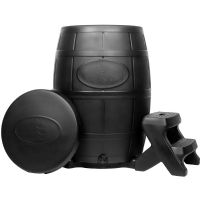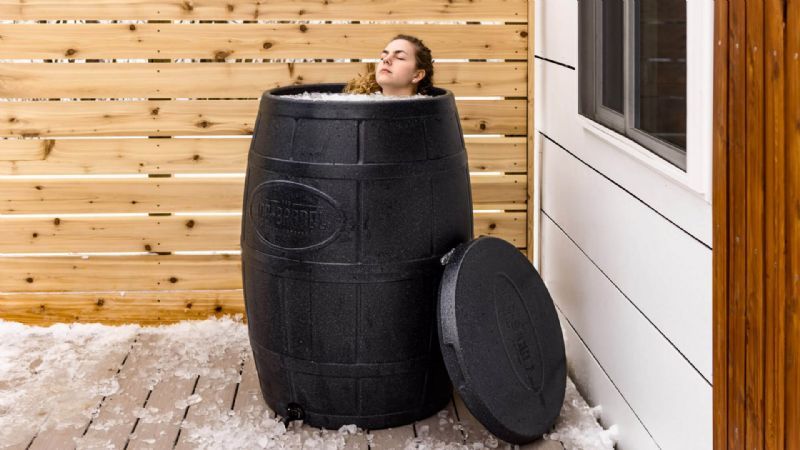 Written by Jessi Cottrell, BSN, RN
Written by Jessi Cottrell, BSN, RN
Exercise and physical activity can make you feel GREAT! In fact, 53 percent of adults say they feel good about themselves after exercising, 35 percent say it puts them in a good mood, and 30 percent say they feel less stressed. The downside of exercise is that our muscles can end up overworked and sore. Microtears in the muscle cause swelling, inflammation, and pain when the muscle stretches or contracts. Cold therapy is one way to address this, and can be delivered in a few ways. One option is a cryotherapy machine, with models that provide full body or targeted area cold treatment. Another user-friendly and extremely affordable option is an ice bath.
 | Ice Barrel for Cold Water Therapy At Home | Made in the USA! View Product |
Water in an ice bath is generally between 50 and 59 degrees. Submersion in cold water narrows blood vessels, which decreases blood flow to the muscles to reduce inflammation and swelling.
.jpg)
An ice bath applies therapy through whole-body submersion in a container of very cold water. The cold penetrates deep within the body’s tissues, supporting the reduction of swelling, inflammation, and pain after an injury.
A fully immersive cold bath experience can also help improve mental wellness, contributing to lower stress levels while supporting the immune system.
Cryotherapy from a machine is focused on skin surfaces, either from spending time inside a cold chamber for whole-body therapy or delivering hand-held treatment over a smaller, targeted area. This impedes the blood from rushing to the injured area, which naturally gets inflamed and starts to swell in response to being stressed. Cold applied to the skin decreases the rate of blood flow to the area, reducing pain and swelling.

There are wide-ranging health benefits to ice baths, whether you’re an athlete coming off a workout or someone who struggles with pain and inflammation. Additionally, an ice bath is an affordable and easy-to-use form of cold therapy.
By constricting blood vessels and slowing blood flow, an ice bath can reduce the swelling and soreness from microtears in the muscle fibers that are common during a strenuous workout. This helps to ease post-workout aches.
The cooling and rewarming process first constricts blood flow, decreases metabolic activities, slows down physiological processes, and reduces tissue breakdown and swelling. The rewarming after an ice bath increases blood flow, flushing toxins away, speeding up circulation, and improving the muscle healing process.
Since cold water constricts blood vessels, helping with the swelling related to inflammation that can lead to pain and stiffness, ice baths can provide pain relief which can help minimize the swelling directly related to inflammation.
Boosting mental clarity and endorphins, ice bath therapy helps you reset your brain as well as your body. With signals moving from the brain along the nervous system, a rapid and significant temperature change helps you destress and reduce anxiety.
Most sessions range from 5-10 minutes and should last no longer than 15 minutes. The recommended frequency is a few days a week.
Ice baths are especially helpful for people who are sore after working out, but an ice bath can do more than reduce inflammation and soothe aching muscles. It can also improve breathing and boost your mood, and sudden ice-cold water immersion can increase the permeability of the blood-brain barrier, which could help defend against some infections. In short, most people will find some benefit to their mental or physical well-being from a quick stint in an ice bath.
.jpg)
Ice baths are safe for most people. It’s important not to stay too long in icy water, as over-exposure to cold can cause hypothermia: an abnormally low body temperature that can make it difficult to think clearly and move efficiently. People with heart disease, compromised circulation, or open wounds shouldn’t use cold therapy, as it can exacerbate underlying conditions.
![]()
An active lifestyle, including exercise, is key to good physical and mental health. One way to maintain a high level of activity is to speed up post-workout recovery through cryotherapy to reduce swelling and inflammation. This can be accomplished in many ways, from cryosaunas to ice baths. Our favorite way to take an ice bath is by using an Ice Barrel!
For more information on cryotherapy chambers and other helpful articles to help you make informed wellness decisions, visit Caregiver University.

Jessi Cottrell is a Registered Nurse, copywriter, mother, and avid book reader. Her nurse background includes emergency medicine, psych & trauma, orthopedic surgery, addiction detox & rehabilitation, and school nursing. She has a passion for finding non-pharmacological methods to treat pain. This passion is fueled by her experience in addiction medicine as well as her own experiences with pain management after various surgeries.